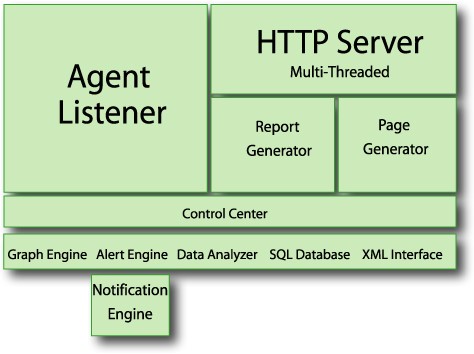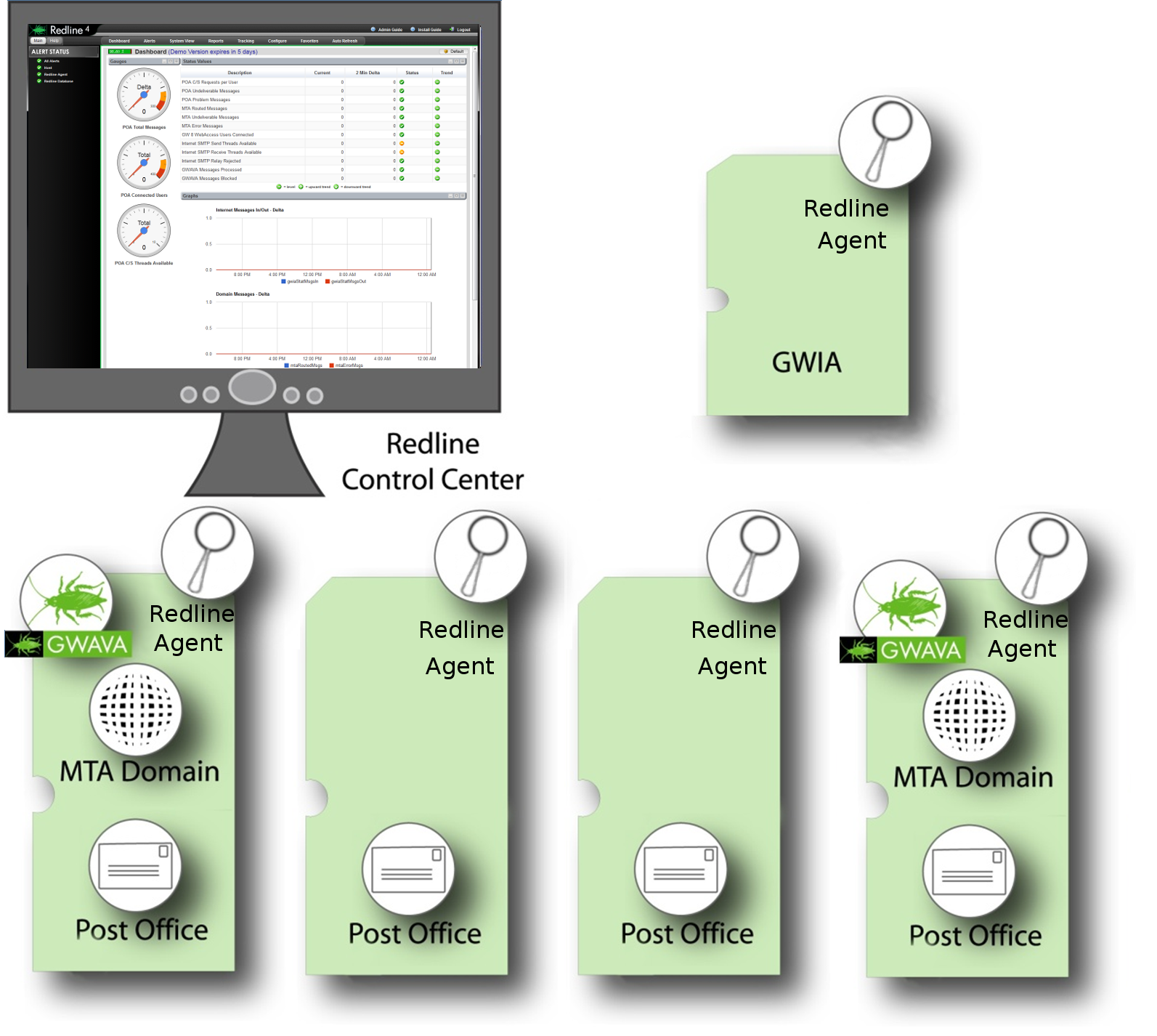4.1 Understand How Redline Works
Because each component requires specific instructions for integration, it is recommended that administrators read through this manual before installing the Redline Program to avoid frustration and confusion.
Redline provides reliable monitoring, analysis, and audit tools for GroupWise systems of any size. Redline collects information and combines it together in a central location. To collect this information from separate locations of any GroupWise system, Redline is comprised of two separate programs, the Redline Agent and the Redline Control Center.
The Redline Agent (also referred to as RLAGENT) connects to the supported programs to gather information regularly. The information is then forwarded to the Redline Control Center. The Redline Agent reads configuration from the configuration file, (RLAGENT.CONF in Linux or NetWare, RLAGWIN.CONF for Windows), which tells the agent how to connect to the Redline Control Center, which holds all configuration for the Agent.
The Redline Control Center (also referred to as RLCENTER) takes the information from one or more Redline Agents through the Agent Listener and stores it in SQL database files. The RLCENTER also stores graphs and alerts in the same manner. For easy administration access, the RLCENTER contains an embedded HTTP web server. The RLCENTER also contains a report and page generator that work with an alert engine, a notification engine, and graph generators to analyze and organize the data that is collected.
In all Redline system installations, regardless of how large or small your GroupWise system is, there must be at least one RLAGENT and one RLCENTER. (There are three exceptions: Reveal, Vertigo, and Advansys Archive2Go does not require or use RLAGENT to communicate with RLCENTER. They communicate directly to the Control Center.)

In a typical system, one RLCENTER is installed for a GroupWise system, and every server running a monitored component of the system will have one RLAGENT installed. (While it is possible to have each RLAGENT report to multiple RLCENTERs, it is not recommended or practical in most cases.)
The RLCENTER serves as a central repository for information gathered and for administration. RLAGENT communicates via TCP/IP to RLCENTER to send the collected data. This means that a RLAGENT does not need to be installed on the same machine as an existing RLCENTER.
RLAGENT communicates to the monitored system via both TCP/IP and direct file access, depending on the component integration. While, theoretically, administrators can install RLAGENTs on servers separate from the GroupWise agents and collect some of the information needed, administrators would not be able to generate all the desired reports. For all reports, local access is necessary. The Linux Agent in Redline 4 can be used to gather all data remotely, but requires file access through network mount points. (The option is discouraged, but possible.) In that case, no agent is required on NetWare or Windows.
The RLAGENT automatically tries to connect to each of its configured components every two minutes.
The RLCENTER runs only on Linux and Windows, while the RLAGENT runs on Netware, Linux, and Windows. It is recommended to run the Control Center on a dedicated server.
